Hung precariously above accumulated rainwater on a concrete rooftop, one life-sized paper boat buoyed by a fishing net is subjected to the Malaysian thunderstorm. The vessel collapses and slowly disintegrates after being overwhelmed, while tall cranes occupy the city skyline. Allegorical and beautiful, Low Yi Chin's installation sets the tone in this
show organised by four artists, which unifying themes include "...interrelated topics engendered by local contexts existing in contemporary Malaysian society." Physical borders pose a challenge for exhibiting within an independent art space, but forms a larger preoccupation for Chong
Kim Chiew. Tarpaulins layered with map tracings depict changing frontiers, and will not be out of place if
shown at NVAG. One accompanying video locates these research markers in uninhabited public environments, its self-reference to power negated by the lack of human presence.
![]() |
| Snapshots from Chong Kim Chiew - Boundary Fluidity (2014 - ongoing) |
Human lust for power, and a perpetual state of distrust as portrayed by the local media, manifest within Liew Kwai Fei's paintings, markings, and found objects. Less derisive and more flamboyant than Noor Azizan Rahman Paiman, his waggish output combines surreal compositions and Mandarin wordplay, with a quaint dose of literal translations. This zany characteristic is apparent in the exhibition title, where its three terms are only related if one is willing to stretch one's imagination. Pulau Melayu refers to one enigmatic painting-sculpture, which looks like three ridiculous figures fused together, then its centre hollowed out. Inside the core is a tudung-wearing mermaid and dinosaurs with songkoks, all bouncing along to flashing disco lights. An asymmetrical construct with multiple aspects craft unexpected perspectives, but this remains a most perplexing work.
![]() |
| Installation views of Liew Kwai Fei - Orang, Melayu: Do, Re, Mi 无来由的人 (2012-2014) |
Placed around 'Pulau, Melayu: X, Y, Z 无来由的岛' is a triptych of oil paintings mounted on wooden frames like bulletin boards. 'Orang, Melayu: Do, Re, Mi 无来由的人' is easier to interpret, where colourful caricatures and phallic/yonic symbols are plentiful and obvious. Marking each work is a sign inscribed in Chinese characters, Latin alphabet, and Jawi script, which use puns referring to the 人 (person) ideogram and its compound multiple 从 (follow), and 众 (crowd). Urban development covers the picture landscape – chopped trees, high-rise buildings, MRT train – and grotesque beings dominate the foreground. As advised in the artist's statement, no reason is required to decipher the illustrated motifs. From patriotic hibiscus to ribald fruits, sacrificial bull to frightened pigs. the facetious and sometimes vicious presentation gives an impression of an ethnocentric outlook. Should curiosity lead so quickly to judgement?
![]() |
| Snapshots from Liew Kwai Fei - Barbie Fatimah the Puteri Mutiara 人鱼芭比法蒂玛 (2014) |
The keris and a rubber tapping tool reinforces this bigoted view, yet Kwai Fei's satirical commentary is effective because of its gaudiness. He states in a
previous solo exhibition, “(t)he Chinese have the tendency to dehumanize the others. This self-centred attitude does not only trivialize but tends to form clichéd judgement about other ethnic groups.” Deliberate textures and a whimsical visual also describe his found objects, where one glossy fairytale book is punctured and drawn over, resulting in a hilarious account that reveals an anxiety about censorship. Hung on the wall are jigsaw puzzles similarly reworked, which together with his painting-sculptures, surround a construct of four tongkats labelled 巫岛/誤導 and 半岛/絆倒. This assemblage is the real
Pulau Melayu, where the artist condemns a country crippled by its citizen's passive prejudice, as lively toy snakes wreath down a static bamboo pole.
![]() |
| Malaysian contemporary art? (clockwise from top left) Works by Low Yi Chin, Chong Kim Chiew, Minstrel Kuik, Liew Kwai Fei |
Socio-political concerns escape Kuantan-based Yi Chin, who documents the natural ecosystem on Pulau Ular, by isolating textures, specimens, and sounds. From one illustration of a venomous sea snail, to two piles of blood cockle 螄蚶 shells, the island theme is migrated from the physical realm to an emotional one. Pantai Remis-raised Minstrel Kuik's installation begins with a
book of astringent poems, followed by photographs of feminine subjects, that surround 'The Island of Repentance'. Varying-sized prints recall a measured cadence, as formal visual properties like repeating shapes and tactile surfaces, fade into a beguiling display of one's internal conflict. The photographer's hidden hand amalgamates symbolic objects and personal subjects, whilst upholding an aesthetic ideal, then occasionally reveals itself as the assertive gesture it really is.
![]() |
| Installation view of Minstrel Kuik - Flowers in The Pigsty (2014) [photographs], and The Island of Repentance (2014) [installation] |
Confined within a narrow walkway, "The Prayer's Room" sees a thick braid of hair laid upon a single-sized bed. A prostrating woman hangs above it, informing of one's reflection that is visualised in the gallery through an opening. Reproduced on newsprint and folded into squares, this panorama of photographs is soul-stirringly beautiful. Memory is preserved in implicit human action - young men perform a wheelie, plants wilted, durians eaten, ground razed, girl plays with pinwheel, cherry stems plucked, insects conglomerate, and more durians just because durians are awesome. Saga seeds and clay sculptures lie in mounted boxes, these amulets protruding from the wall like containers of hope. Opposite this passage is 'The Prisoner's Landscape - after Pudu Jail', where cut-outs of the prison wall are pasted on softboards, while old captures of ambivalent passer-bys hang from the string divider.
![]() |
| Installation views of Minstrel Kuik - The Prayer's Room (2014), including Perak Woman (2014) |
The solid and fractured landscape represents a rearrangement of the same puzzle, as unresolved notions remain open in this phenomenal installation by Minstrel. Binary concepts oscillate via self-doubt - informed/intuited, sympathy/apathy, fear/acceptance... what does freedom/captivity from the male gaze mean? On a lighter note, it is interesting to see the influence of partner Kwai Fei's works in hers, and vice versa. Research-based practice takes a back seat in this contemporary art exhibition, as one contemplates about the action/reaction dynamic between artist and audience, while the irritating Barbie Doll resounds incessantly. With political bickering hogging the headlines, despite the nation still mourning the demise of two planes, perhaps the next independent group show can be called "转弯抹角 - Kepala Pusing - Truth and Lies".
![]() |
| Installation view of Low Yi Chin - Sailing the Map (2014) |
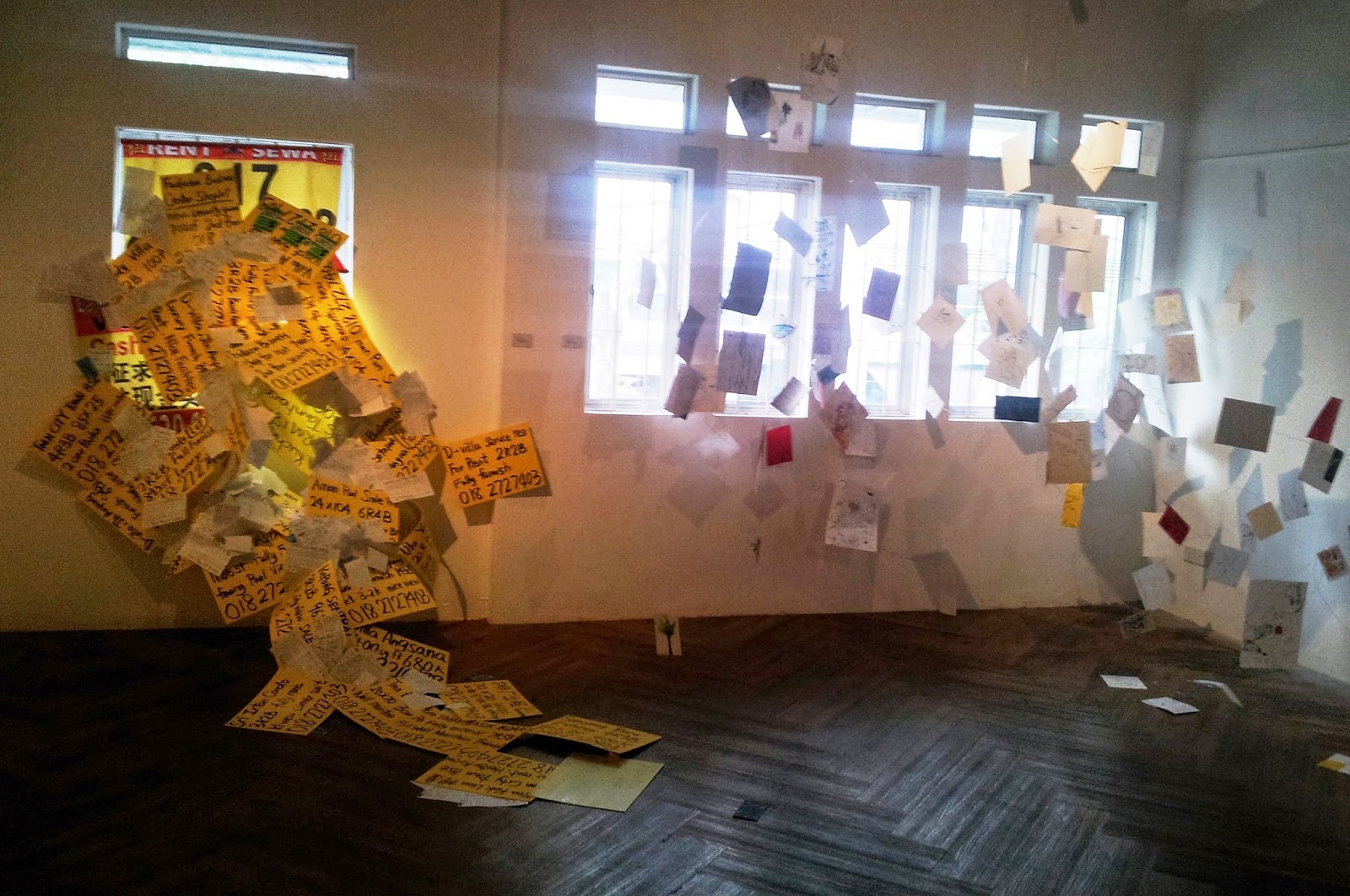




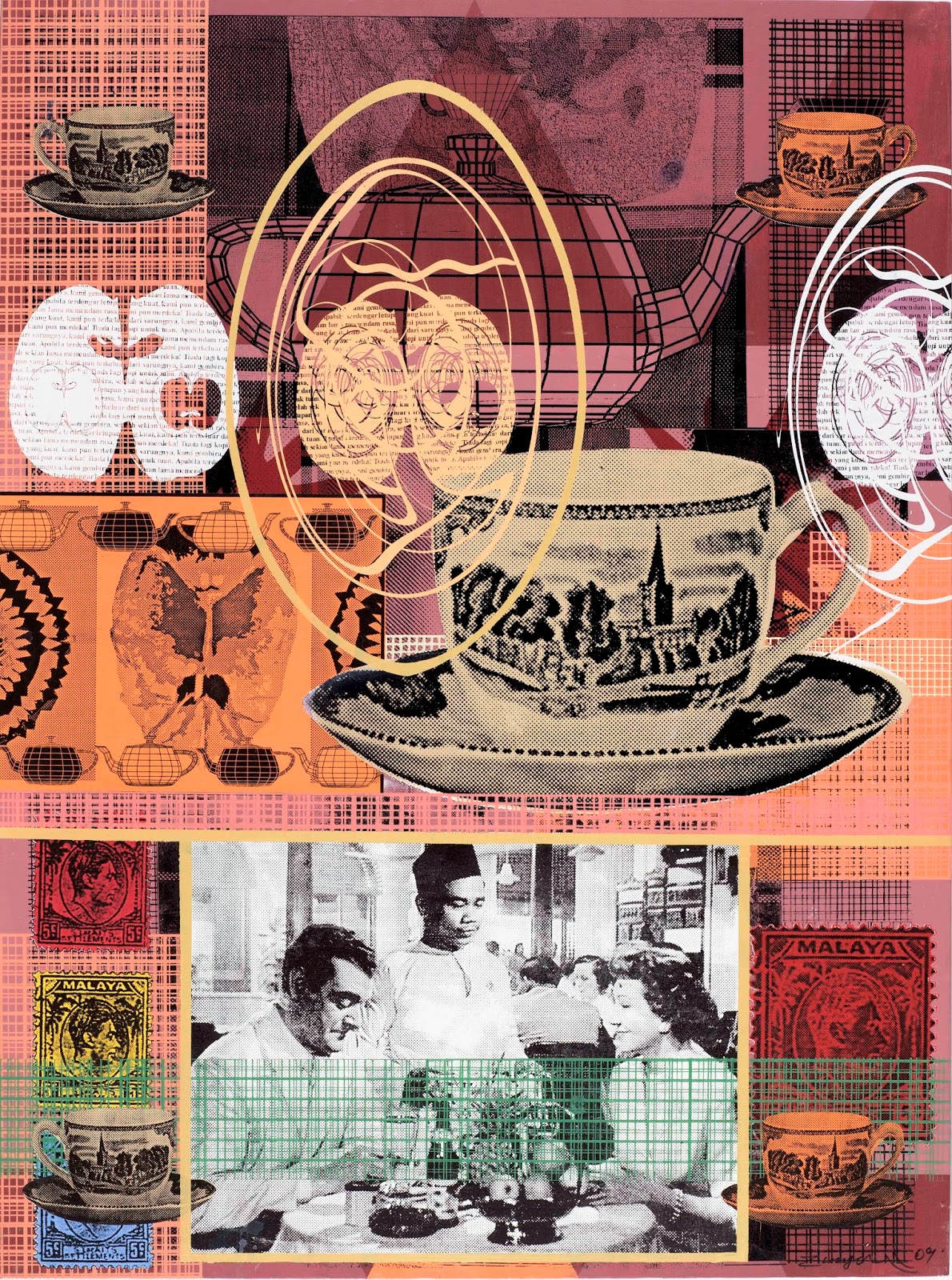







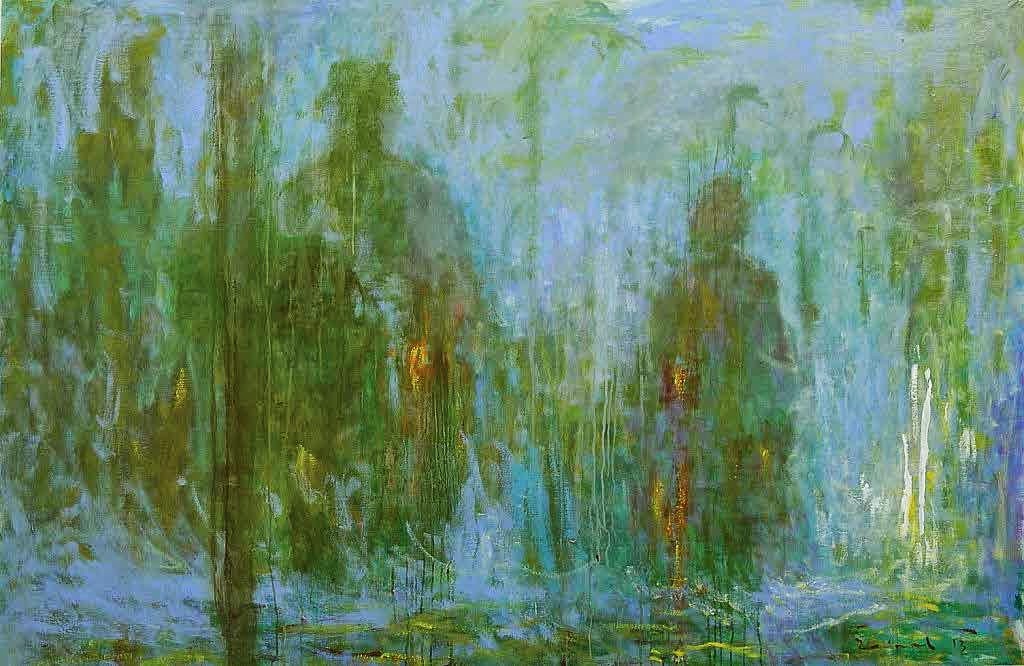

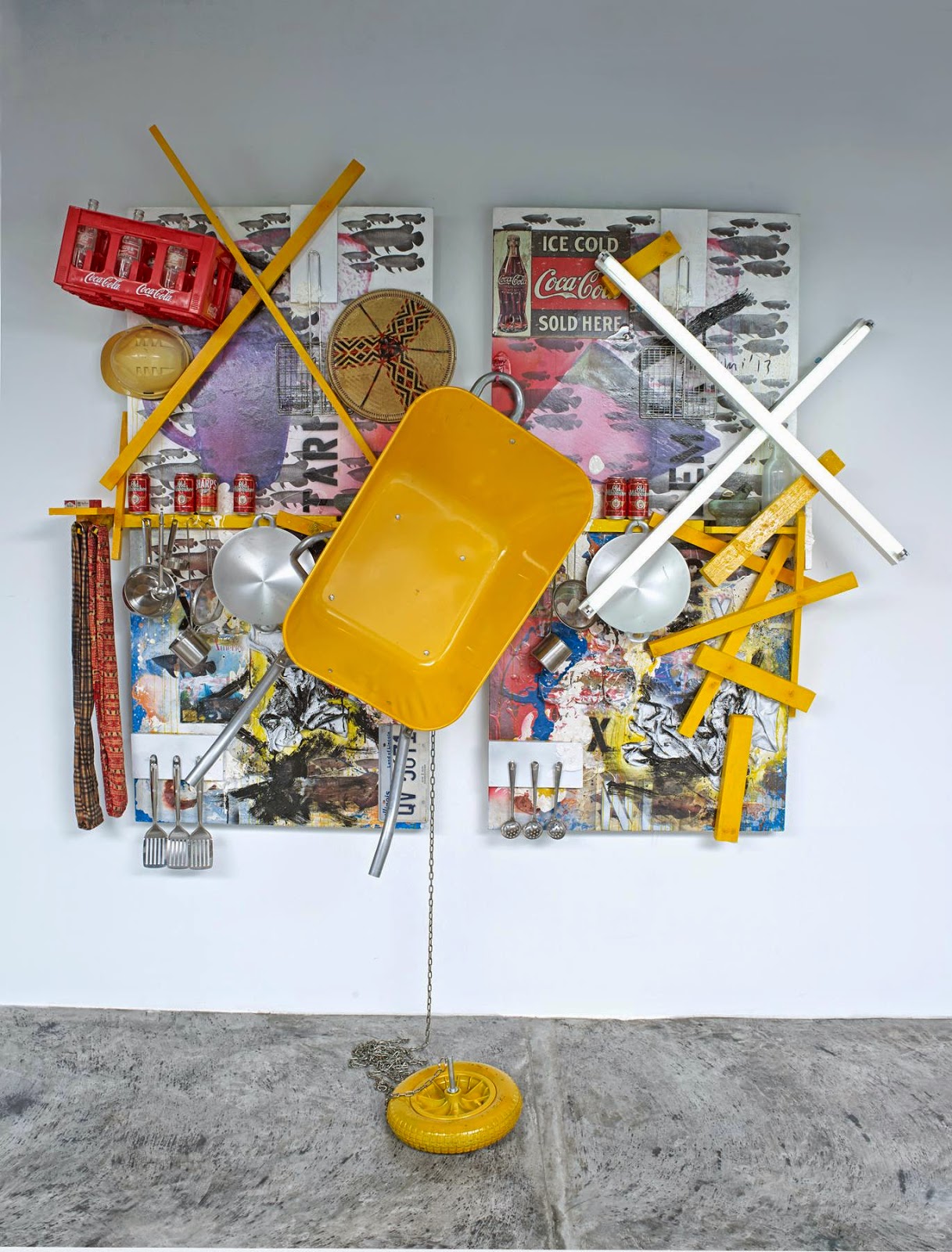


.jpg)
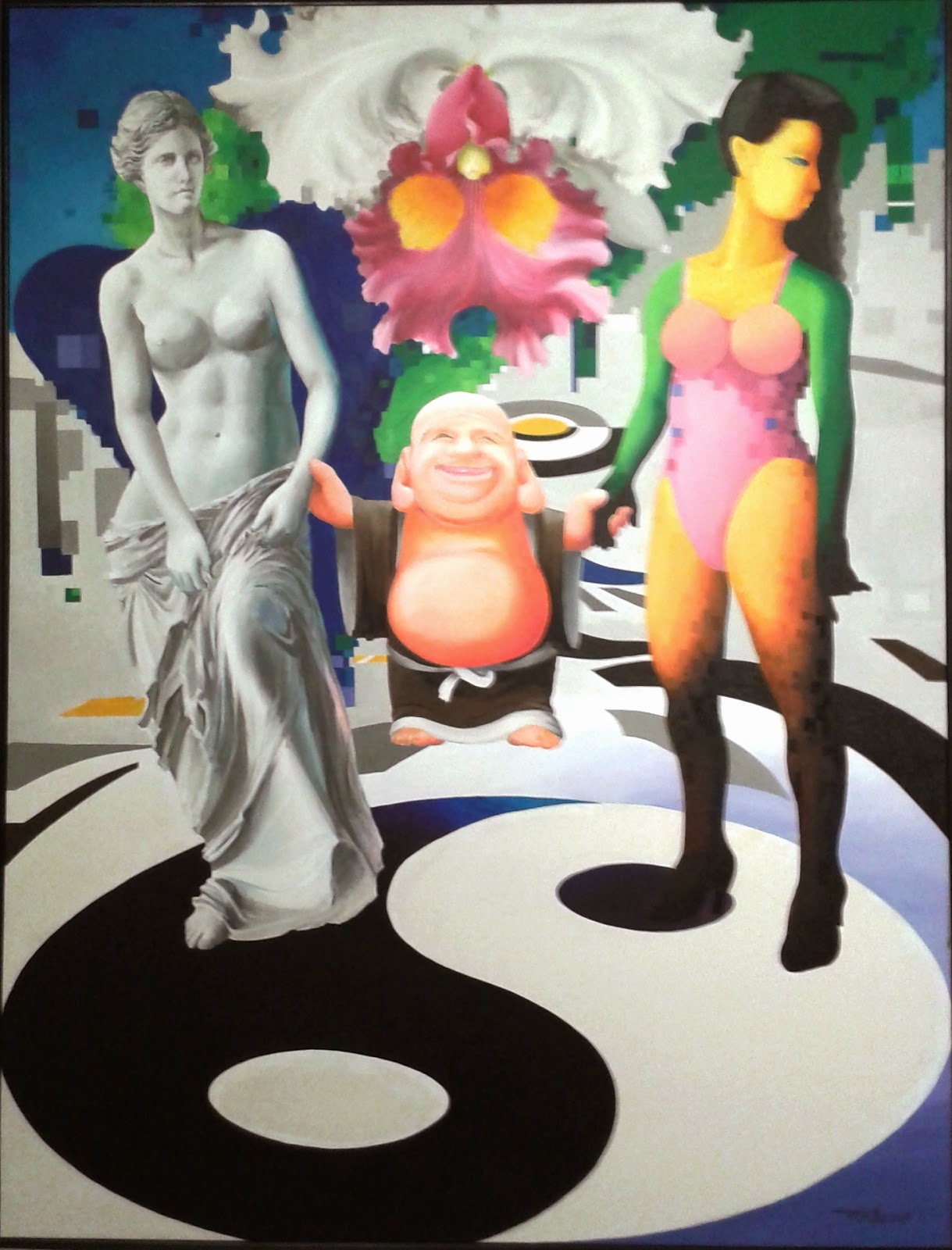




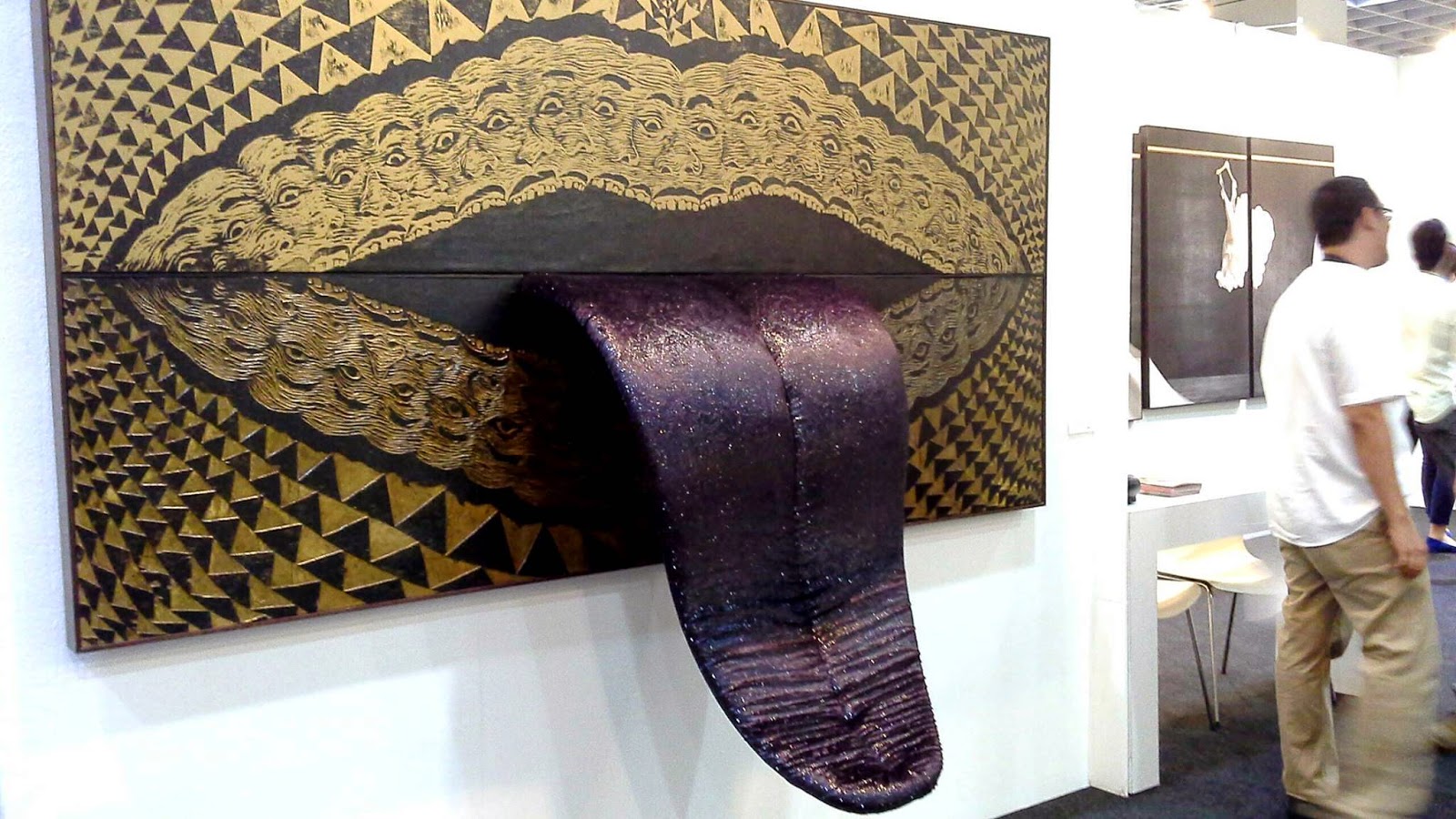

.bmp)
.bmp)